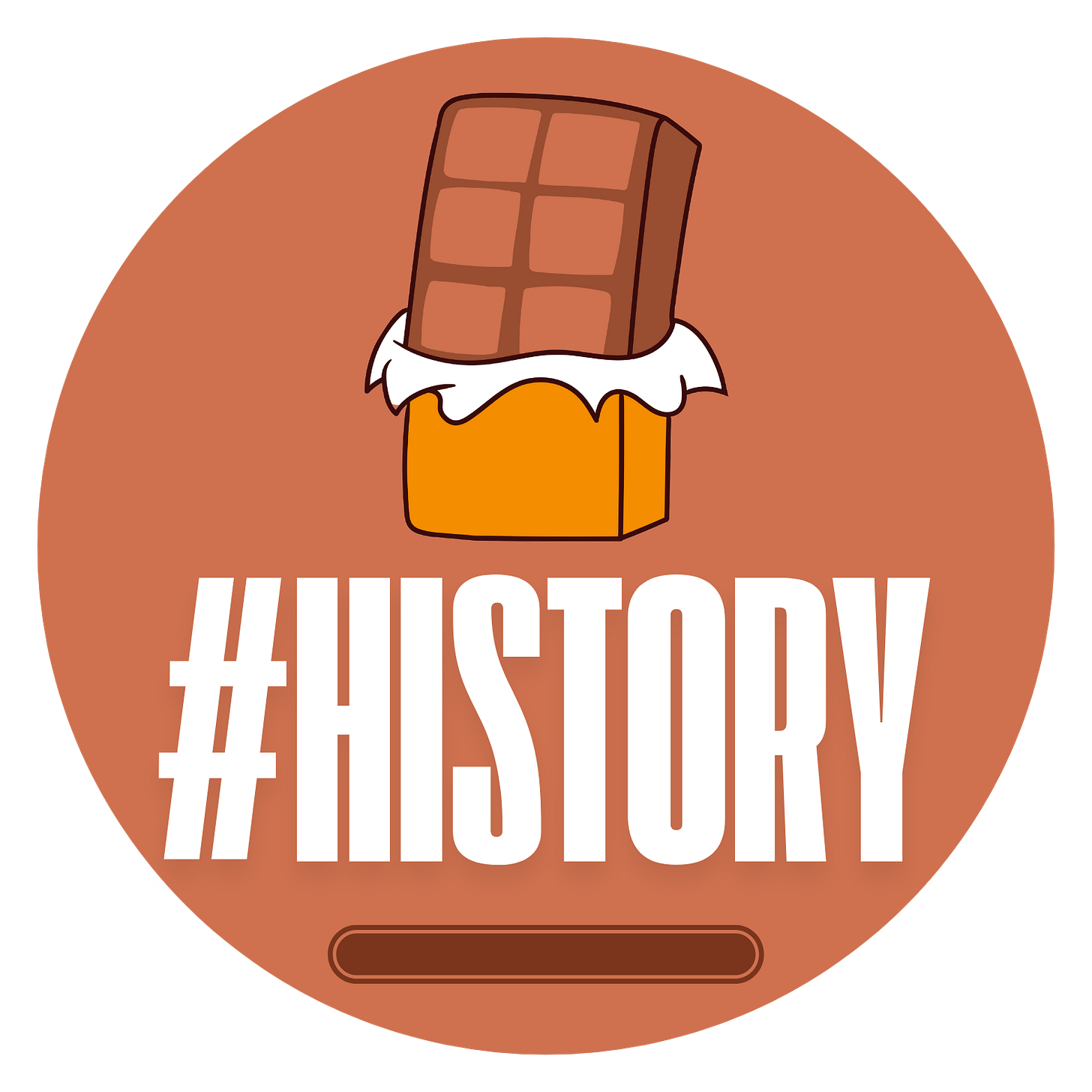The Man Who Wired The Atlantic Pt. 1
Medical Cannibalism, On This Day, Photo of the Day & Agatha Christie.
BOC#037
7 MINUTE MUNCH
TITLE PIECE: PART 1: THE ‘CHRISTOPHER COLUMBUS OF AMERICA‘
During the mid 1800s, the U.S was beginning to follow in the footsteps of Europe’s industrial revolution starting with New York’s Erie Canal in 1825, the steam engine, and the railroad in the 1840s. The telegraph was the latest tech of the day seeing the U.S expand from a single working telegraph line in 1846 to 24,000 miles of the stuff by 1852. Even in light of such progress, its full potential lay dormantly awaiting the gargantuan ambitions of a few special men.
It’s true that the east and west coasts of the United States had already been linked by telegraph cables by 1840. It’s also true that several underwater cables had linked England to France and Ireland, and Corsica to Sardinia by the 1850s. But what hadn’t yet been achieved was the ambitious unification of Europe and North America by way of a lengthy transatlantic communications cable. The task of laying cables in an ocean whose depths had yet to be comprehensively surveyed, and whose topography was yet to be mapped was no mean feat. The proposed cables would need to be two hundred times longer than anything yet known, not to mention significantly stronger. The ships required would also need to be much larger.
Cyrus Field, a thirty-four year old retired tycoon was just the man to take things to the next level. In 1854, Cyrus was introduced to Canadian engineer Frederick Newton Gisborne. Grisborne was actively seeking funds to lay a cable from New York to Newfoundland (Canada). Although this didn’t quite resonate with Cyrus at the time, it was later detailed at a meeting held at his Manhattan mansion. Gisborne went on to explain that ships from Europe were able to arrive at Newfoundland sooner than they were able to arrive at New York. If news from ships could be telegraphed across Newfound and down to New York, it would save ships three or four days at sea — things were beginning to make sense. But following a glance at his map, Cyrus began to wonder if it would be possible to link not only New York to Canada, but also Canada to Ireland.
This was to become an obsession for Cyrus Field.
The next question, then, was if the topography of the ocean floor was fit for the laying of cables, and whether two thousand mile long cables could carry an impulse strong enough for transmission. Leading Oceanographer, Lieutenant Matthew Fontaine Maury, head of the Naval Observatory in Washington, and Samuel Morse who invented the telegraph in the U.S, both advised Cyrus that the plan was indeed actionable; in theory at least.
Cyrus then set about acquiring investors such as Peter Cooper who’d made his fortune in steel and telegraph cables. Peter was sold, but told Cyrus that he’d only partake as long as he could recruit a few more investors with whom to share the risk. With a handful of investors onboard, including a one Marshall Roberts, himself a shipbuilder, the required sum was on the table. On 10th March 1854 the New York, Newfoundland and London Telegraph Company was born.
Cyrus Field began laying the overland portion of the line setting off from the Newfoundland capital at St. John, through inhospitable vegetation to the southern tip at Channel Port aux Basques. Delays caused by the laying of underwater cables between Newfoundland and the Canadian mainland meant that the telegram between Newfoundland and New York didn’t open until 1856 leaving a huge dent in the company’s budget. With a third of its capital depleted, the company needed to raise more funds, and so Cyrus decided it was time to lobby the British government. The British obliged, but the law required Cyrus to set up a company that would be owned primarily by Englishmen. The British owned Atlantic Telegraph Company was thus born out of this necessity, and provided the financial resources needed to see the project through its next decade.
Ships large enough to carry and lay submarine cables were now needed. The British supplied the project with HMS Agamemnon, and the U.S offered the largest ship of the day, USS Niagara. With the prospect of competition approaching the corridors of Washington, Cyrus sourced the cables, and hastened to work. The two ships set off for Newfoundland from Valentia Island in Ireland with whom they’d stay in touch throughout the voyage. Niagara laid the first stretch of cable as they departed with a celebratory send-off.
All was going well until the crew lost contact with Valentia island on August 11 1857. After two and a half hours of panic, relief ensued as they regained communications, but it wasn’t to last long. At 3.45am, Field was awoken by shouts from the deck. The cable had snapped, lost to the depths of the Atlantic. The attempt was subsequently aborted, but having returned home with a calm demeanour, Cyrus Field managed to retain the support of the British and the Americans, and scheduled a second attempt for the following year.
In June 1858 the two ships agreed to rendezvous in the middle of the Atlantic where they’d splice the two cables. This time they’d both head in different directions laying cable as they sailed toward opposite shores. A storm threatened to sink Agamemnon, but they eventually got underway with the British ship headed for Ireland, and the American ship for Newfoundland. After three miles of sailing, the cable snapped! Having rejoined and fixed the splice, both ships set out once again, but within 24 hours, the cable snapped yet again! A third attempt couldn’t have failed, surely. But it did. The cable had now snapped three times in four days. Fortunately, amidst all the pessimism back on dry land, Field was to be allowed one final attempt.
On 29 July 1858, the ships reunited in the middle of the Atlantic. This time the cable didn’t snap, but it certainly wasn’t plain sailing. Field was tested by the prospect of Agamemnon running out of fuel, and the Niagara drifting off course. As if this wasn’t enough, the crew was yet again spooked by a temporary pause in communications. On this occasion, however, luck appeared to have come to their rescue.
With the Newfoundland coast in sight, Cyrus excitedly rowed to shore at 1.45am, before rushing fifteen miles on foot to the nearest transmission point. With a little assistance, he began transmitting the first successful messages, the first of which was to his wife, Mary.
The public awoke to jubilation with businesses on both sides of the Atlantic closing to celebrate and partake in prayer. It was as though the Atlantic had ‘dried up’ according to the Times.
Cyrus was likened to Christopher Columbus for his achievements in connecting the ‘old’ and ‘new’ worlds. Upon his return to New York, he was received with a one-hundred-gun salute, parades, fireworks and pomp. The age of information had been born.
Or had it?
On 1 September 1858, the cable once again fell silent….
Part 2 next week.
DID YOU KNOW…
Medical cannibalism, the practice of eating human body parts for their healing properties has been practiced throughout human history. From consuming the blood of Gladiators as a remedy for epilepsy, to the consumption of ancient egyptian mummies by the Victorians as a remedy for headaches to heart attacks, medical cannibalism has found its way into the annals of medicinal history. The consumption of Egyptian mummies began in the middle ages with European exposure to the Islamic world by way of the crusades. Europeans mistranslated what was in fact an asphalt used in the embalming process thought to have medicinal properties, leading them to consume a substance found on the mummified bodies, and eventually the bodies themselves.
This wasn’t the first time the Crusaders would embrace cannibalism, as Tamim Ansari writes:
“Once the Crusaders made it into Ma’ara, they did more than slaughter. They went on a frightening rampage that included boiling adult Muslims up for soup and skewering Muslim children on spits, grilling them over open fires, and eating them.” - Destiny Disrupted: A History of the World Through Islamic Eyes (Amazon Affiliate link)
ON THIS DAY: 15th SEPTEMBER
Google.com was registered today in 1997. Happy Birthday, Google?
Onboard HMS Beagle, Charles Darwin reached the Galápagos Islands today in 1835. Check out BOCN#026 for more.
The Sun, one of the largest tabloids in the U.K was published for the first time today in 1964.
The Act of Independence of Central America was signed in Guatemala City today in 1821. It proclaimed the independence of Central America from the Spanish Empire and included countries like Guatemala, El Salvador, Honduras, Nicaragua and Costa Rica.
PHOTO OF THE WEEK: On 10th September 1977, Hamida Djandoubi, a Tunisian agricultural worker, was beheaded by guillotine in Marseille, France. Having been found guilty of the murder of his girlfriend, he became the last person to be executed in France. The guillotine and the death penalty were officially abolished in France in 1981.
Read: Origins of the Guillotine
FROM THE AUTHORS MOUTH…
The English author Agatha Christie, whose works included Murder on the Orient Express and The Mousetrap, was born today in 1890 in Devon.
MISSED LAST WEEK? Read Here: Hitler's Pope — How Pope Pius XII aided Hitler
[Links marked with * are affiliate links]










